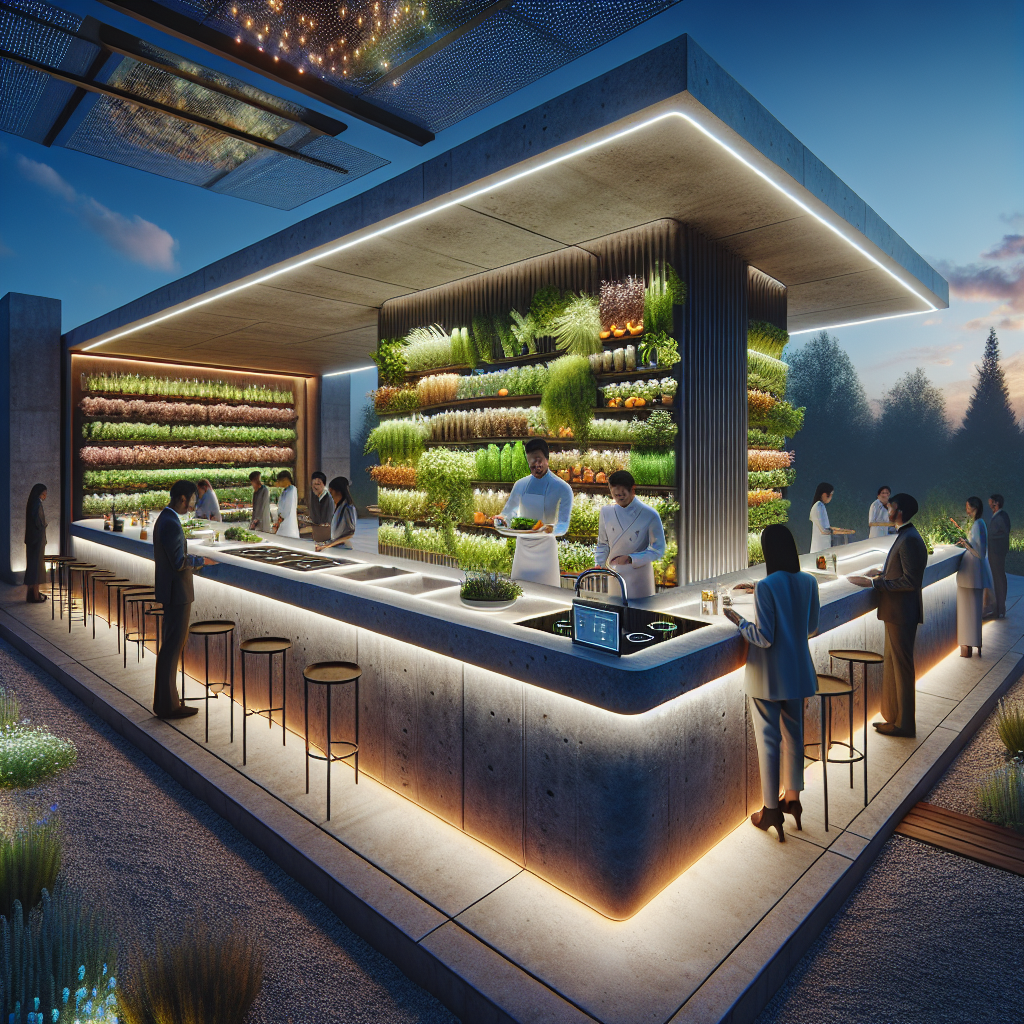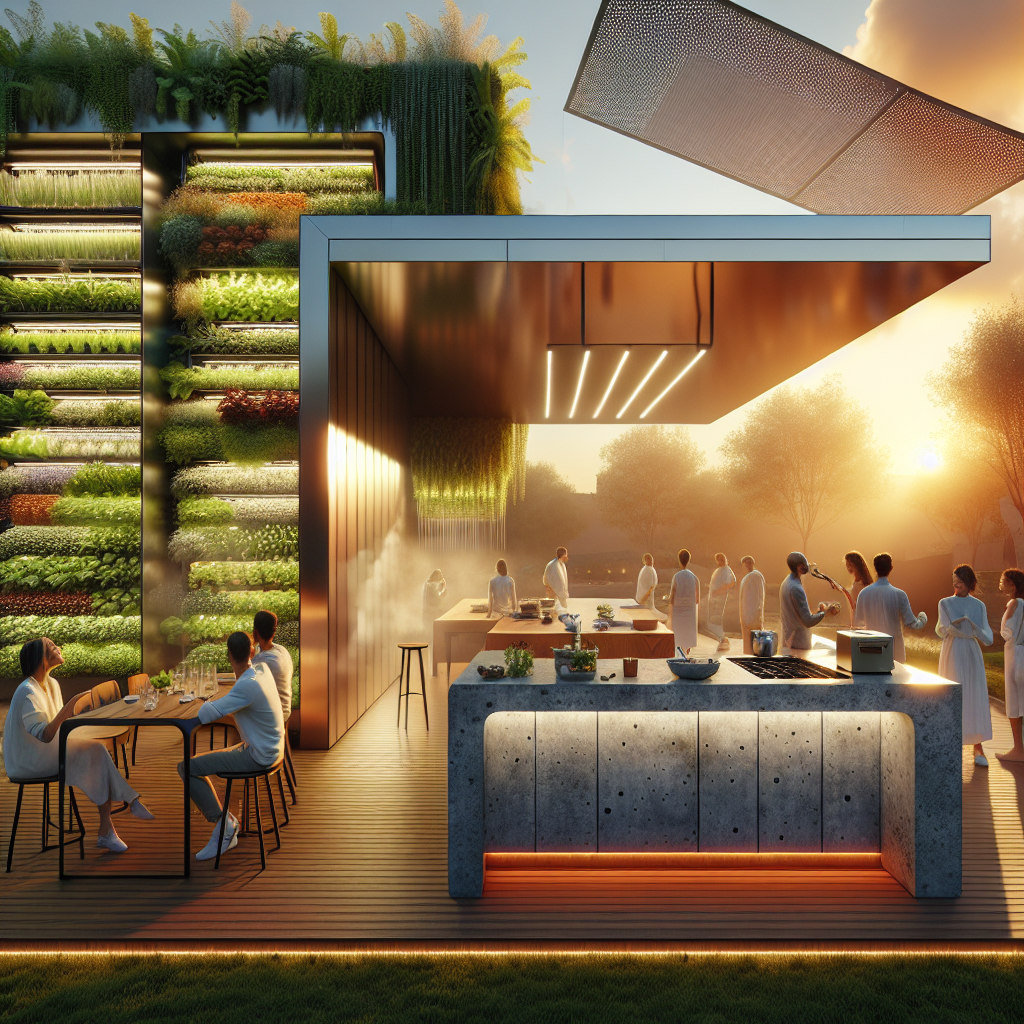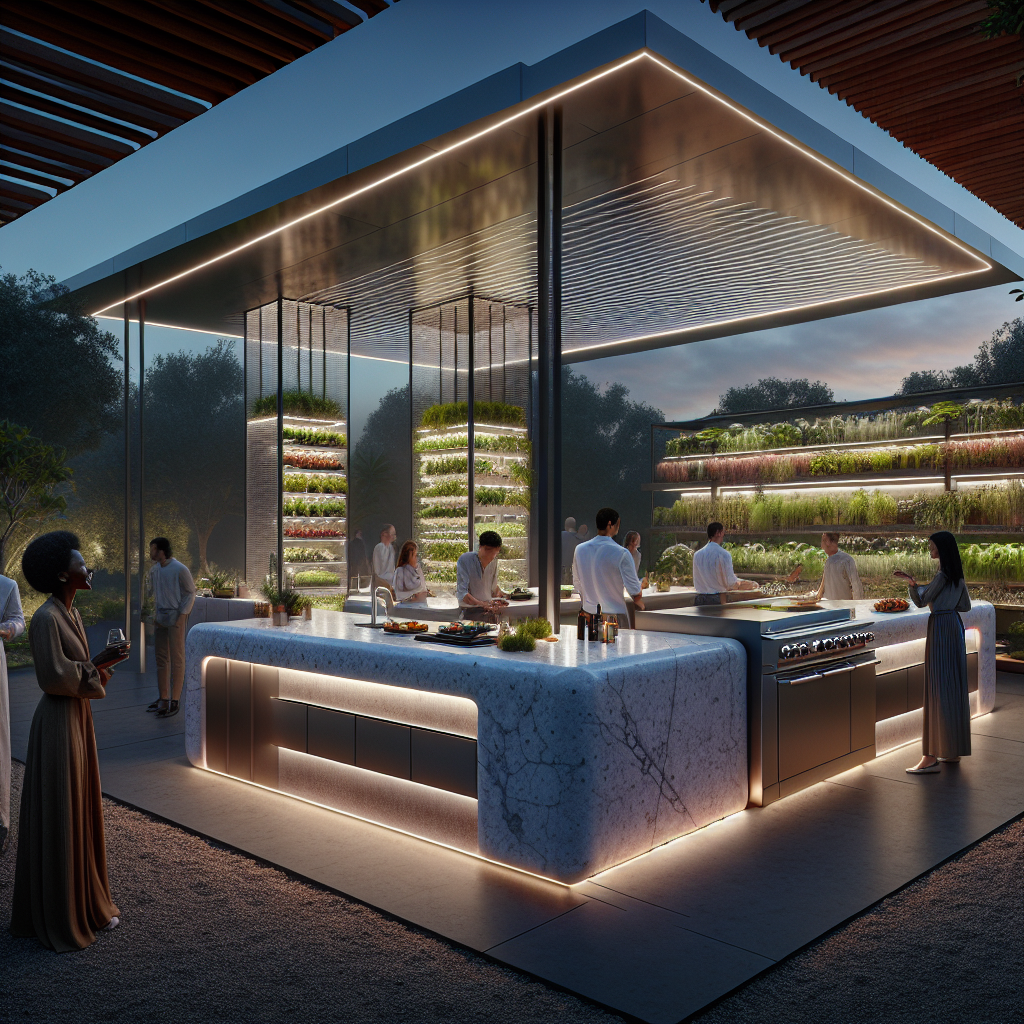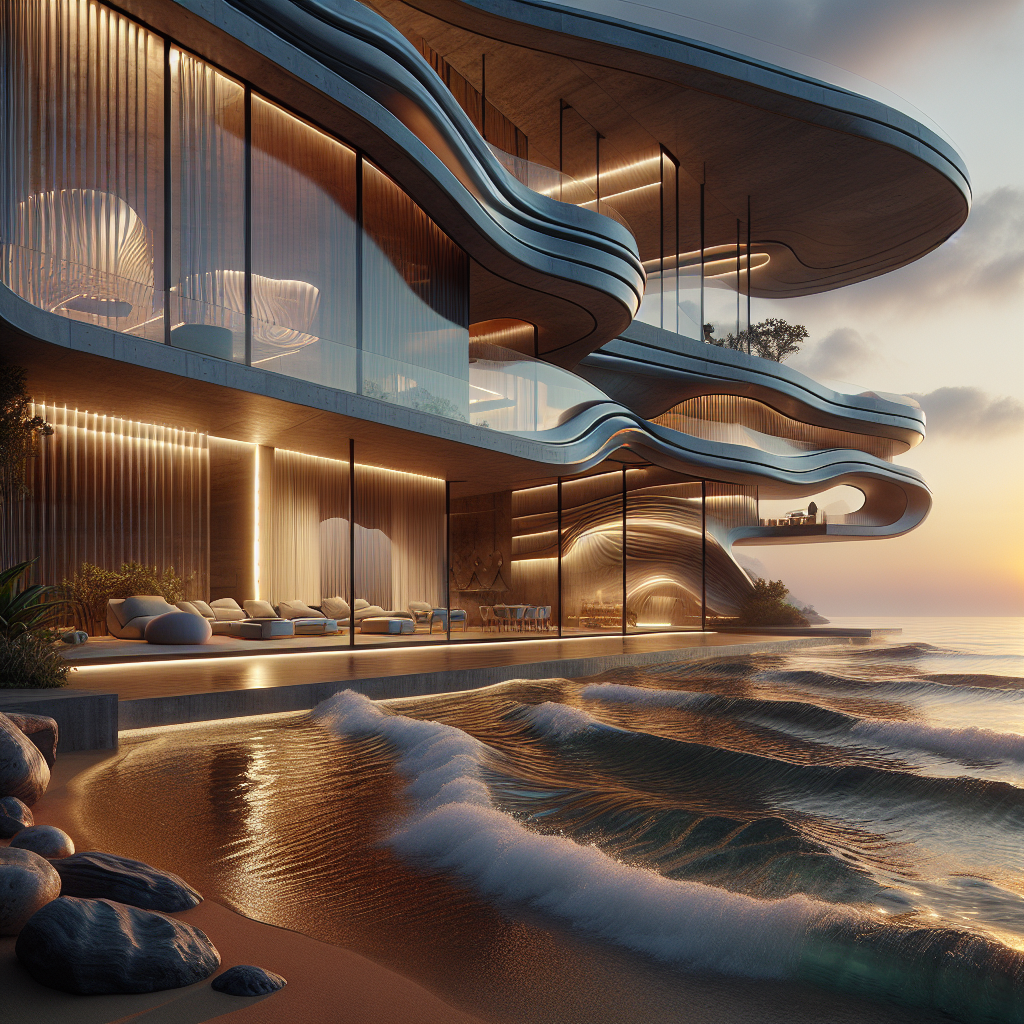Futuristic Outdoor Kitchens: Blending Design and Technology

Futuristic Outdoor Kitchens: Blending Design and Technology
Once considered a rustic extension of the home, the outdoor kitchen has undergone a radical transformation. Today, it is no longer a simple grill on a patio but a technologically advanced, design-driven environment that merges architecture, sustainability, and digital innovation. As outdoor living becomes central to contemporary lifestyles, architects and designers are reimagining these spaces as culinary pavilions of the future—where smart systems, sustainable materials, and sculptural aesthetics converge. This evolution is not just about cooking outdoors; it is about crafting immersive experiences that redefine the boundaries between nature, technology, and design.
The Rise of the Outdoor Kitchen as a Design Statement
Outdoor kitchens have shifted from being seasonal conveniences to becoming permanent architectural features. According to a 2024 report by the National Kitchen & Bath Association, demand for outdoor kitchens has surged by nearly 60% over the past five years, with luxury homeowners and boutique hospitality projects leading the charge. These spaces are no longer hidden in backyards; they are designed as focal points, often integrated with pools, terraces, and landscaped gardens.
Architects are treating outdoor kitchens as extensions of the home’s architectural language. For instance, in Mediterranean villas, kitchens are framed by travertine and corten steel, while in urban penthouses, they are sculpted in glass and polished concrete. This echoes the broader trend of futuristic architecture, where indoor and outdoor boundaries dissolve into seamless, multifunctional environments.
Smart Technology: The Digital Chef’s Playground
The futuristic outdoor kitchen is as much about technology integration as it is about aesthetics. Smart appliances, once confined to interiors, are now weatherproofed and optimized for outdoor use. Voice-activated grills, app-controlled smokers, and AI-powered pizza ovens allow for precision cooking while minimizing human error. The influence of smart home technology is unmistakable, with IoT-enabled devices offering real-time monitoring of temperature, energy use, and even ingredient freshness.
Lighting and climate control systems are also becoming integral. Imagine a kitchen island that adjusts its LED hue to match the evening sky, or retractable shading systems that respond to solar intensity. These adaptive elements recall the principles of responsive design, where architecture evolves dynamically with its environment.
Sustainability at the Core
Beyond convenience, sustainability is shaping the DNA of futuristic outdoor kitchens. Designers are increasingly experimenting with recycled stone composites, bamboo cabinetry, and countertops made from reclaimed glass. Solar-powered induction cooktops and rainwater-fed sinks are becoming common in high-end projects, reflecting the broader architectural shift toward net-zero energy buildings.
Biophilic principles are also influencing outdoor kitchen design. Integrating vertical herb gardens, edible landscapes, and hydroponic systems transforms the kitchen into a living ecosystem. This approach resonates with the philosophy of biophilic design, which emphasizes the health and well-being benefits of connecting people with nature.
Material Innovation and Aesthetic Experimentation
Materiality is central to the futuristic outdoor kitchen. Architects are pushing beyond stainless steel, experimenting with nanotechnology-treated surfaces that resist stains, corrosion, and UV damage. Ceramic composites and high-performance concrete are sculpted into monolithic islands, while translucent stone slabs with embedded LEDs create a theatrical stage for cooking.
Designers are also exploring parametric forms—curved counters, modular islands, and sculptural canopies that echo organic geometries. These elements are not only functional but also transform the kitchen into a visual spectacle, especially when illuminated at night. The effect is reminiscent of futuristic pavilions showcased at design fairs such as Salone del Mobile in Milan, where the interplay of light, form, and technology creates immersive environments.
Case Studies: Kitchens as Architectural Icons
Several recent projects illustrate the radical potential of futuristic outdoor kitchens:
- The Cliffside Pavilion in Ibiza – Designed by a Barcelona-based studio, this kitchen integrates corten steel counters with a retractable photovoltaic canopy. At night, the canopy doubles as a projection screen for ambient visuals, transforming the space into a hybrid dining-theatre experience.
- Tokyo Sky Terrace – A rooftop kitchen in Shibuya employs robotic arms for grilling and plating, paired with an AI-driven system that suggests recipes based on available ingredients. The design blurs the line between culinary performance and digital spectacle.
- California Desert Retreat – Here, the kitchen is carved into rammed earth walls, with a solar-powered induction system and a hydroponic herb wall. The project demonstrates how futuristic kitchens can also embrace ancient building wisdom, echoing lessons from desert architecture.
The Social Dimension: Outdoor Kitchens as Cultural Hubs
Outdoor kitchens are not only about food preparation; they are about social interaction and cultural expression. In many cultures, cooking outdoors has always been a communal ritual. The futuristic outdoor kitchen amplifies this by embedding digital storytelling, immersive lighting, and even augmented reality overlays that allow guests to visualize recipes or wine pairings in real time.
This aligns with the growing emphasis on interactive design, where spaces are designed to engage users beyond functionality. In this sense, the outdoor kitchen becomes a stage for performance, a gathering place, and a cultural hub.
Forecast: The Next Frontier
Looking ahead, the outdoor kitchen will continue to evolve as a laboratory of design innovation. Emerging technologies such as 3D-printed modular components, AI-driven energy optimization, and bioluminescent lighting systems will redefine how these spaces function and feel. The integration of artificial intelligence, IoT ecosystems, and sustainable design will push outdoor kitchens beyond luxury amenities into essential architectural features of future homes and urban developments.
Ultimately, the futuristic outdoor kitchen is not just about cooking—it is about designing experiences. It embodies the convergence of architecture, technology, and ecology, offering a glimpse into how we might live, eat, and gather in the decades to come. For architects and designers, it represents a fertile ground for experimentation, where the boundaries of function and form are constantly redefined.
The outdoor kitchen of tomorrow is not a space—it is a vision.








